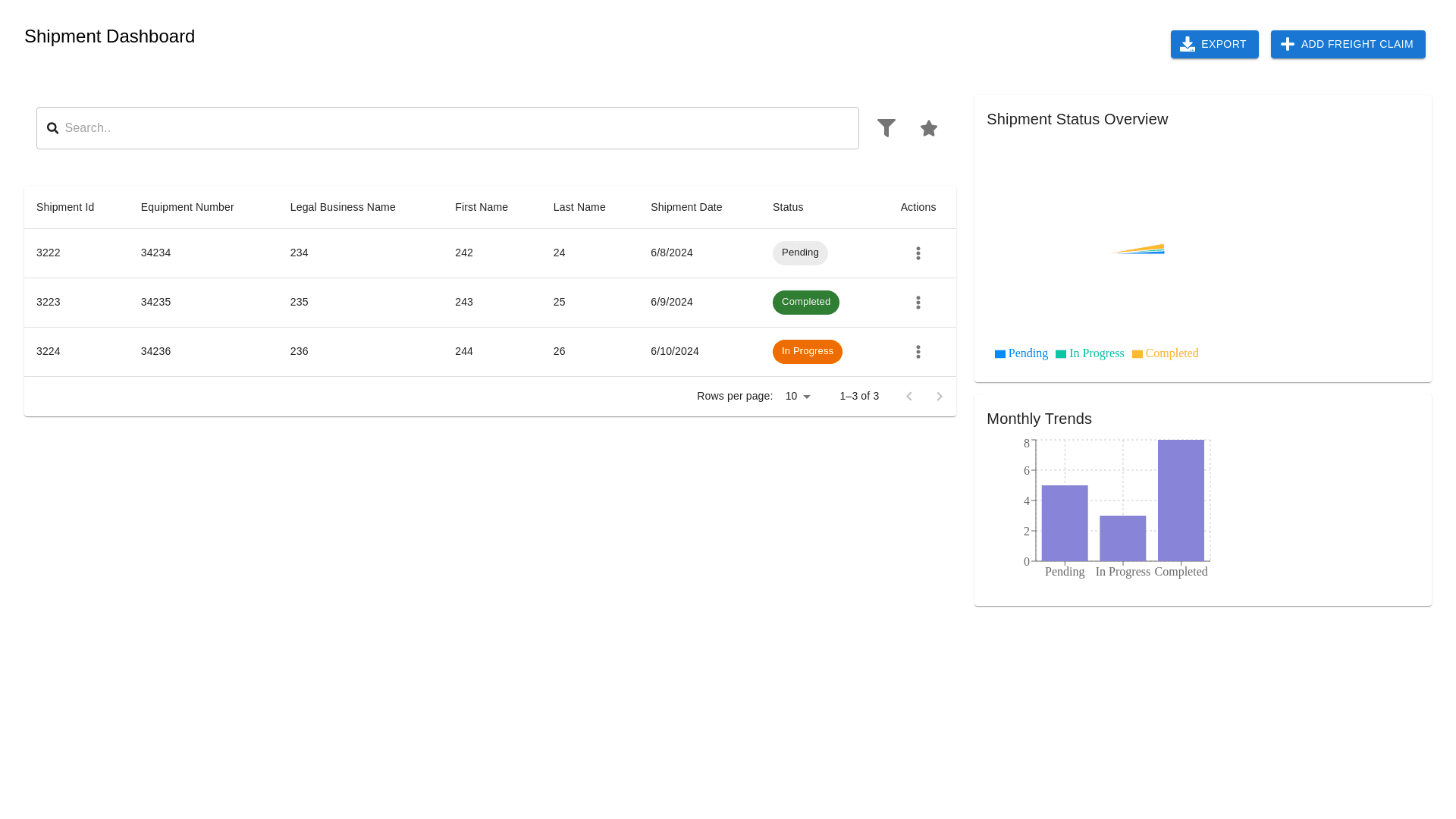Drawer Width - Copy this React, Mui Component to your project
It looks like you've outlined a comprehensive set of enhancements for your claims dashboard to improve user experience, efficiency, and data insights. To take this further and begin implementing these ideas, let's break down some specifics and potential strategies: 1. Enhancing Search Functionality Advanced Search Implementation: Incorporate filters directly into the search interface using dropdown menus or checkboxes for criteria like shipment ID, equipment number, and claim status. This could be achieved using a front-end framework like Angular or React to manage state and updates efficiently. Autosuggest Feature: Use a JavaScript library like Typeahead.js or implement this feature within a framework such as Vue.js to offer dynamic suggestions as users type their search terms. Saved Searches: Implement functionality to save and retrieve searches using local storage or a database, depending on the user's preference and the security requirements of stored data. 2. Adding Visualizations Dashboard Widgets: For visualizations like pie charts, bar graphs, and histograms, libraries such as D3.js or Chart.js can be very useful. These libraries integrate well with most web technologies and offer extensive customization options. Interactive Data: Ensure that graphs and charts are interactive, allowing users to click on elements for more detailed views or filter data directly from the visualization. 3. Data Table Enhancements Dynamic Sorting and Filtering: Use DataTables (a plug-in for the jQuery Javascript library), which offers extensive options for sorting, filtering, and pagination out of the box. Column Customization: Implement a UI component that allows users to select which columns to display. Store these preferences in the user's session or profile for consistency across sessions. Export Functionality: Leverage server-side scripts to generate CSV or PDF files from the current state of the table, ensuring users can export exactly what they see. 4. Improving User Interface and Experience Design Consistency: Apply a consistent theme and element design using CSS frameworks like Bootstrap or Material-UI which are both visually appealing and highly customizable. Progress Indicators and Notifications: For real-time feedback, consider using a front-end framework's state management capabilities to handle notifications and the display of progress indicators dynamically. 5. Additional Features Workflow and Document Management: Integrate existing workflow management tools through APIs or develop custom workflow functionalities that fit exactly how your claim processes work. Collaboration Tools: Tools like annotations and comments can be developed using real-time technologies such as WebSocket for live interactions. Analytics and Reporting: Integrate a BI tool like Power BI or Tableau, or develop custom reporting features using libraries like pandas (for data manipulation) and matplotlib (for plotting) in a Python-based backend environment. Implementation Considerations Front-end Technologies: Choose a robust framework like React or Angular for your front-end to handle dynamic content changes and user interactions smoothly. Back-end Integration: Ensure your backend can handle API requests efficiently, possibly using Node.js or Python's Flask for lighter, service-oriented interactions. Database Management: Optimize your database queries and schemas to handle the enhanced functionality, especially for advanced search and analytics. Gathering User Feedback Iterative Design: Use agile methodologies to iteratively design and implement features, allowing for regular feedback loops with actual users. User Testing: Conduct usability testing sessions to observe how users interact with the new features and identify any areas for improvement.
